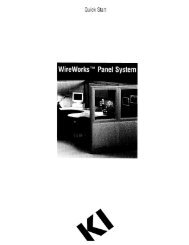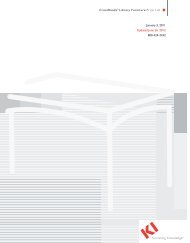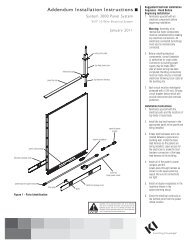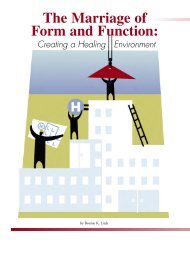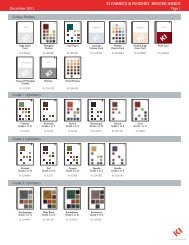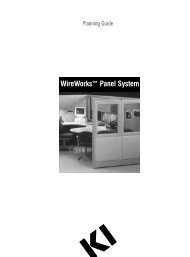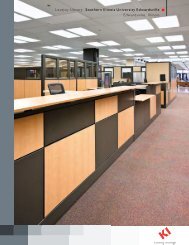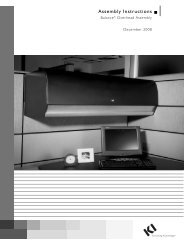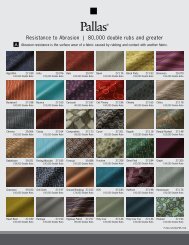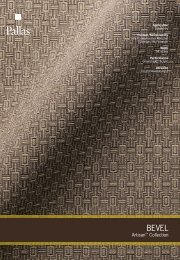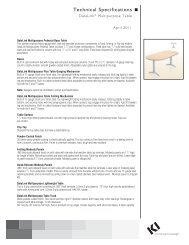Fabric Training Document_FINAL_020708.pdf - KI.com
Fabric Training Document_FINAL_020708.pdf - KI.com
Fabric Training Document_FINAL_020708.pdf - KI.com
Create successful ePaper yourself
Turn your PDF publications into a flip-book with our unique Google optimized e-Paper software.
<strong>KI</strong> INGRADE FABRIC PROGRAM TRAININGFABRIC GLOSSARYNapping – A finishing process in which the material is passed through abrasive rollers that disturb (similarto brushing) the surface of the fabric. The fabric has a soft hand and a suede-like appearance.Nylon – A man-made synthetic fiber that is strong, durable, exhibits high static and pilling, and lowmoisture regain.Olefin – Polypropylene fiber; a man-made fiber that is bulky but lightweight, can only be solution-dyed andhas a low melting temperature which allows for texturing of the yarn (which can be heat set). The term isinterchangeable with olefin when discussing fiber.Organic Pattern – Any pattern that features motifs that are curved or irregular, as in the natural world,rather than straight lines, sharp angles and geometric shapes. Organic patterns can be abstract or realistic.Pattern Repeat – To produce continuous lengths of fabric <strong>com</strong>mercially, it is designed so that a standarddesign unit containing a specific arrangement of motifs can be repeated across the width and along thelength of a fabric. The horizontal repeat size of a design must divide evenly into the width of the fabric tobe printed or woven.Piece-dyed – <strong>Fabric</strong> dyed in piece, or bolt form, usually in a solid color after it has been constructed.Polyester – A man-made fiber that is high-strength, washable and abrasion resistant, but subject to pilling,collecting static electricity and staining.Polypropylene – A man-made fiber that is bulky but light weight, can only be solution-dyed and has a lowmelting temperature which allows for texturing of the yarn (which can be heat set). “Olefin” is a broaderterm in chemistry that refers to a series of chemicals of a particular structure, but “olefin” and“polypropylene” are used interchangeably when discussing fiber.Primary Color – The three colors in the spectrum that cannot be derived from any other colors; red,blue and yellow.Railroad – To turn a fabric sideways when applying to furniture or walls so that when installed, the fillingyarns run vertically on the furniture.Rayon – A man-made fiber processed from cellulose that is easily dyed and lustrous; chemically similar tocotton. Used alone or as a blend, the yarn is used in a variety of fabrics with a soft hand that drape well.Viscose rayon has been processed into liquid and then extruded into filament and is rayon’s most popularform.Repp – A fabric with a horizontal rib effect characterized by closely spaced warp yarns with ribs or cordsin the filling. A slub yarn is sometimes used in the filling for texture.Saturation – The intensity of a color, i.e. a red and a pink can hold the same hue, or position on the colorspectrum with the difference being that the red is more saturated than the pink as it has “absorbed” moreof the “redness,” or the color itself, while the pink has been made “weaker” with white. The less-intenseversion of a color is its tint.Selvage (Selvedge) – The long, finished edges of a bolt of fabric that run parallel to the warp. The fillingyarns are caught by these end yarns and are usually a stronger yarn than the rest of the warp.Sheen Luster – Note that “shine” is used to describe undesirable, unexpected or excessive luster/sheen.Page 19 of 20




